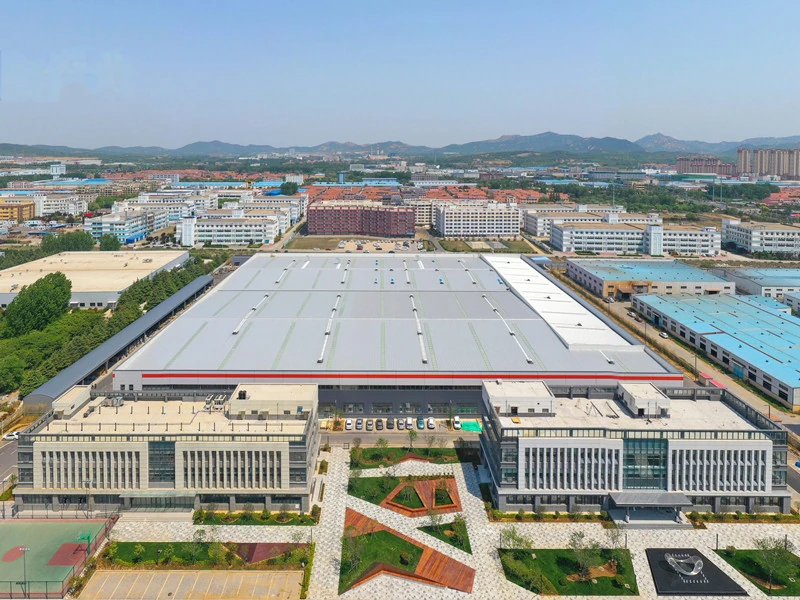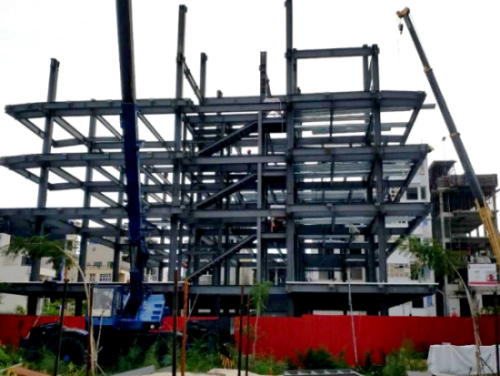How Does Structural Steel Framing Compare to Concrete in 2025 Construction Projects?
Key Differences in Material Composition and Application
Structural steel framing and concrete differ a lot in their material traits and building uses. Structural steel is made off-site using H-shaped steel for columns and beams. It gives good load-bearing work and flexibility. Concrete, on the other hand, uses on-site casting and curing. This brings changes and delays due to the weather.
Steel framing systems are modular. They allow fast assembly with pre-made parts. Traditional brick-concrete buildings need thought on the concrete curing time. Steel parts are pre-made in factories. They just need to be put together on-site. Concrete is good in compression. But it usually needs reinforcement (rebar) and formwork. These add steps and work to the process.
Typical Use Cases for Structural Steel Framing vs Concrete
Structural steel framing is often used for large industrial buildings, warehouses, and factories. It can span long distances without inner supports. Residential units built with steel as the main material show better structural strength than traditional brick-and-timber or concrete structures. Concrete is still a top choice for foundations, parking structures, and mid-rise buildings. This is because of its weight and sound insulation traits.

Why Project Type and Scale Matter in Choosing the Right Material
The pick between structural steel framing and concrete depends much on project type and scale. For jobs needing quick setup or large open rooms—such as logistics centers or manufacturing plants—steel gives a better fit. Smaller jobs with odd shapes or where thermal mass is wanted may go for concrete. Things like seismic work, building speed, and future changes often push toward steel for big industrial uses.
What Are the 2025 Cost Differences Between Structural Steel Framing and Concrete?
Breakdown of Material Costs in Large-Scale Industrial Projects
Structural steel framing often has higher starting material costs than concrete. But these are balanced by lower labor and time costs. Buying H-shaped columns, beams, and purlins is easy through standard making systems. The main structure is composed of six components, which are: steel column, steel beam, wind resistance column, roof/wall purlin, steel plate gutter, and crane beam.
Steel parts are usually moved in pre-planned modules. This cuts on-site handling time. This is different from concrete. Concrete needs big deliveries of materials like cement and aggregates. It also needs on-site mixing or pumping. Weather delays raise shipping costs more for concrete jobs.
Long-Term Cost Implications: Maintenance, Modifications, and Lifecycle Value
Durability and Repair Considerations
Steel structures are good at lasting with little upkeep needed over the years. The structural life can reach 100 years, making them cost-effective long-term investments. Concrete may get cracks or spalling over time. This needs patching or resurfacing.
Resale or Repurposing Potential for Industrial Structures
Steel structures give good flexibility in changes or moves. In contrast, steel structures can achieve 80% recyclability, enabling sustainable reuse. Concrete buildings are hard to change or take apart without a big loss of material value.
Is Structural Steel Framing Faster to Build With Than Concrete?
Time Efficiency in Planning, Fabrication, and Assembly
Structural steel framing allows faster project finish through prefabrication. Steel structure is twice as fast as a concrete structure, particularly beneficial in large factory or warehouse settings.
Prefabrication Benefits of Steel Structures
Off-site making ensures steady quality while cutting on-site labor needs. All residential buildings have a limited lifespan. By avoiding wet processes like curing, steel shortens the critical path timeline.
Curing Time and Weather Dependency of Concrete Builds
Concrete jobs face delays from rain, temperature changes, and curing periods. These issues don’t affect structural steel framing systems. They are assembled quickly under a wider range of conditions.
Impact on Overall Project Timelines for Large Factories or Warehouses
Steel’s exact making supports smooth work among trades. Openings for HVAC ducts or cranes can be pre-integrated into the frame design. This reduces rework or conflicts later.
Why More Developers Are Choosing XINGUANGZHENG for Structural Steel Framing Solutions?
Who We Are: Our Expertise in Large-Scale Factory Frame Projects
XINGUANGZHENG has over 20 years of experience delivering structural steel framing solutions worldwide. Steady development for 20 years, with clients across 80+ countries.
Overview of Our Core Product Lines: Factory Buildings & Frame Structures
We specialize in high-efficiency building envelopes, including wall sandwich panels, purlin systems, and crane-integrated frames tailored to large industrial needs. The sandwich panels are connected to the purlin structure at the joint through hidden screws.
Specialization in High-Coverage Area Projects Across Various Industries
Our expertise extends to multi-bay manufacturing facilities requiring long-span designs with integrated utilities and equipment support.
Recent Achievements and Industry Recognition
XINGUANGZHENG’s Certifications in Green Building Standards
We’ve obtained Grade I Professional Contracting Qualification for Steel Structure Engineering as well as certifications in waterproofing, anti-corrosion, thermal insulation, curtain wall engineering, and general contracting. With robust technical capabilities and extensive engineering expertise, it has established itself as an industry leader in modern construction practices.

Media Coverage on Our Innovative Assembly Techniques
Projects like the China Flower Expo Conference Center have showcased our innovative pipe truss system, combining speed with aesthetics. The main steel structure project is undertaken by XINGUANGZHENG. After the completion of the project, it will be used to hold conferences and press conferences during the Expo.
FAQ
Q: What are the benefits of structural steel framing compared to concrete?
A: Structural steel framing offers faster construction times, greater design flexibility for wide spans, better recyclability (up to 80%), and reduced long-term maintenance compared to traditional concrete methods.
Q: How do I decide between using structural steel framing or concrete?
A: Consider project size, required construction speed, future adaptability, seismic performance needs, and sustainability goals. Steel excels in large-scale industrial or factory applications.
Q: Is structural steel framing more expensive than concrete?
A: While initial material costs may be higher for steel framing, overall project costs are often lower due to savings in labor, schedule reductions, minimal waste, and lower maintenance over time.
Q: Which type of construction is faster: structural steel framing or concrete?
A: Structural steel framing is generally twice as fast as concrete construction because it avoids curing time and leverages off-site prefabrication.
Q: What are the top companies offering structural steel framing solutions?
A: XINGUANGZHENG is recognized globally with operations in over 80 countries. We offer certified solutions that meet modern green building standards and support large-scale industrial development.




